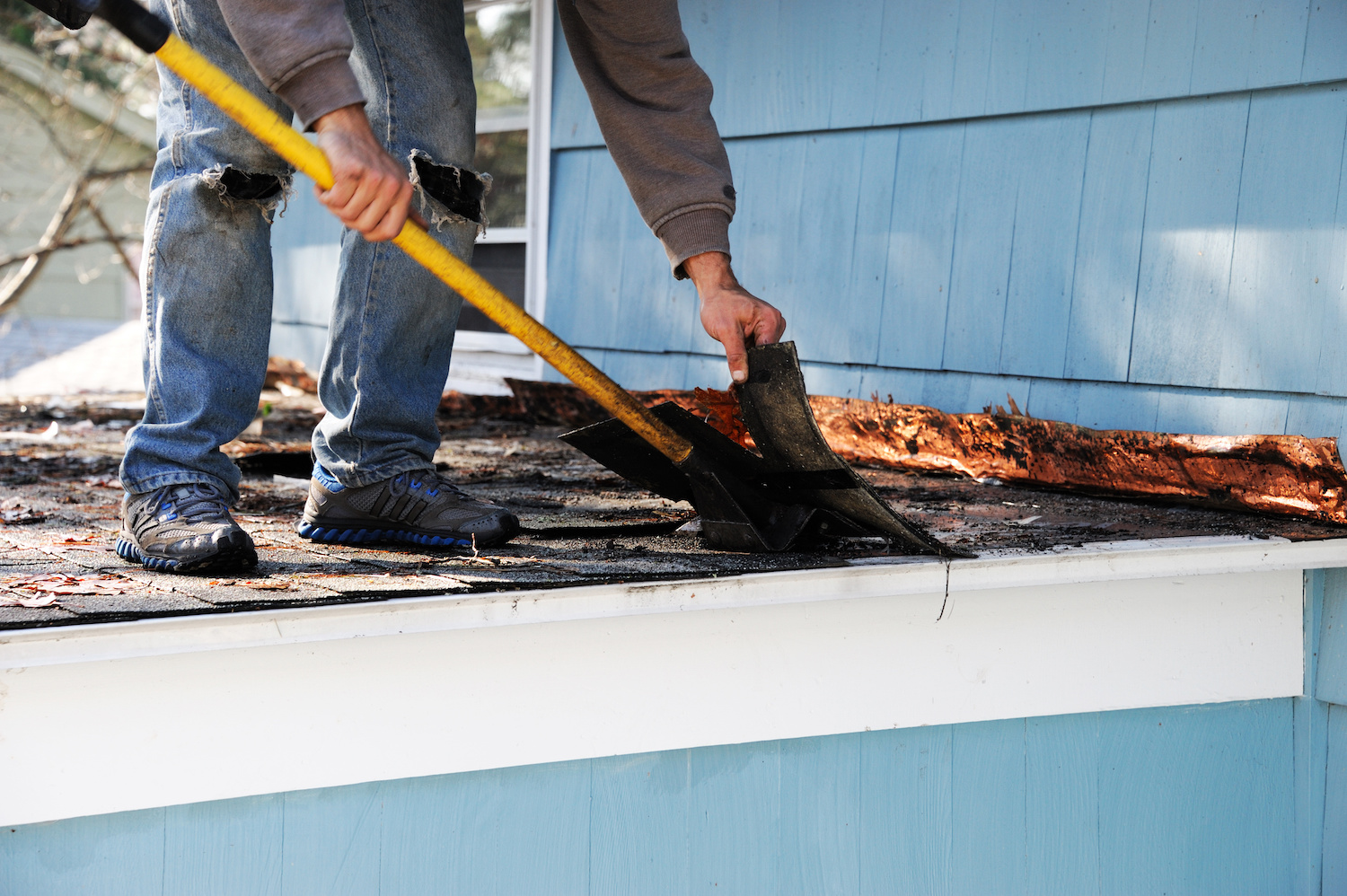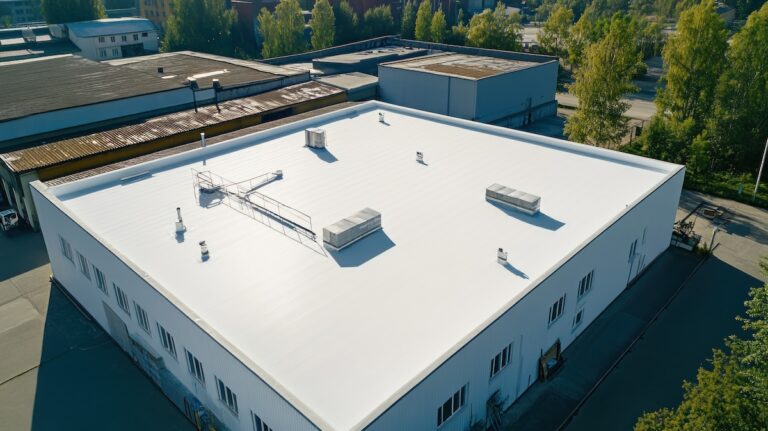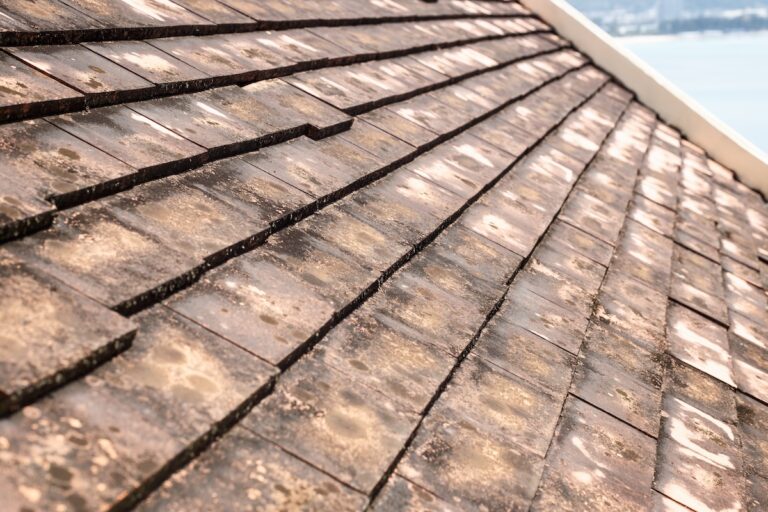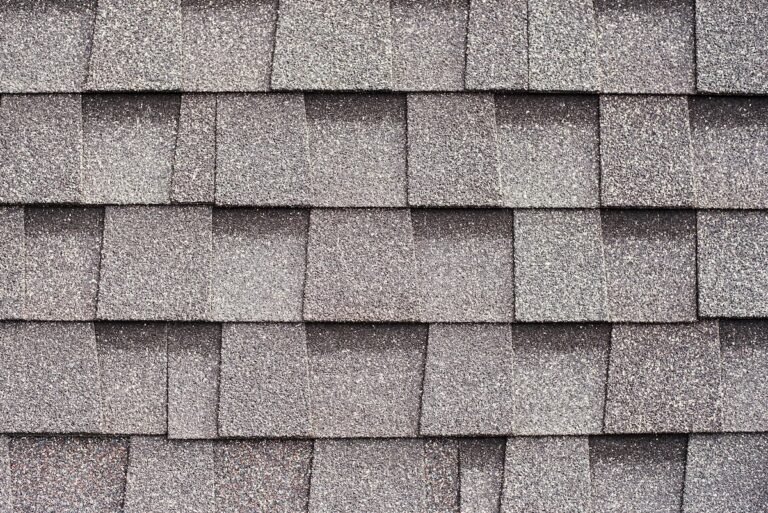When disaster hits your roof, having the right emergency roof repair tips at your fingertips makes all the difference. Whether it’s heavy winds, hail, falling debris, or ice dams, knowing what to do—and what not to do—can protect your home or commercial building from costly damage.
In this checklist, we’ll walk you through how to:
- Identify a true roofing emergency
- Apply fast, effective temporary fixes
- Get expert help to stabilize and restore your roof
Let’s break down everything you need to know—so you’re ready when disaster strikes.
🤔 What Qualifies as a Roofing Emergency?

Not every leak means panic, but certain scenarios require immediate attention from a roofing professional:
- Heavy leaks near electrical components
- Shingles torn off during a storm
- Structural sagging or collapse risk
- Impact from trees or debris
- Active water intrusion during ongoing rain or snow melt
If your roof is allowing uncontrolled water into your building or threatening the structure’s integrity, it’s time to act fast.
1. 🦺 Put Safety First
Your roof may be damaged—but your safety shouldn’t be.
- Avoid climbing on the roof: Wet surfaces, loose materials, or hidden structural problems can make climbing extremely dangerous.
- Look for ceiling sagging: If you see bulges, bubbling, or cracking, evacuate that area.
- Turn off electricity if needed: If water is near electrical panels or wiring, shut off the breaker box and call an electrician.
Tip: Don’t underestimate hidden risks. Always observe your surroundings before acting.
2. 🏠 Protect What’s Inside
While waiting for help, reduce internal damage with simple, safe steps.
- Catch leaks with buckets or tubs to stop water from spreading.
- Move furniture, electronics, and valuables out of the path of incoming water.
- Use towels and fans to keep moisture from building up on floors and drywall.
- Carefully poke ceiling bubbles to release pooled water—only if it can drain safely.
Tip: The sooner you manage interior water, the less damage you’ll deal with long-term.
3. 📸 Document the Damage
Before you touch anything, take pictures. Proper documentation protects your insurance claim.
- Capture exterior damage: Include missing shingles, exposed underlayment, fallen branches, or detached gutters.
- Photograph indoor effects: Show wet ceilings, floor damage, and anything affected by the leak.
- Write down the timeline: Note when the storm occurred and when you first saw damage.
Tip: Keep a copy of your photos in the cloud so they’re easily accessible when filing your claim.
4. 👍 Install Temporary Protection
Until a roofer arrives, small efforts can go a long way.
- Tarp over affected roof sections using sandbags or weighted edges. Avoid nailing anything directly into the roof.
- Apply roofing tape or cement to small holes or cracks if safe to do so from a ladder.
- Use plastic sheeting indoors to cover furniture or insulation until repairs are made.
Tip: Don’t try to repair complex areas yourself—improper fixes may void your warranty or cause more harm.
5. 📞 Call a Professional Roofing Contractor
Not every roofing company handles emergencies—make sure the one you call does.
- Choose a local company with 24/7 emergency service. Speed and local familiarity matter.
- Confirm licensing and insurance before any work begins.
- Ask about the inspection process, emergency response fees, and timeline for full repairs.
- Request documentation of all work for insurance purposes.
Tip: Companies like G. Cannon provide free emergency inspections and honest repair estimates—without pressure.

✅ Emergency Roof Repair Checklist for Homeowners
Use this checklist to keep track during your roofing emergency:
- Stay off the roof: Always prioritize personal safety.
- Identify active leaks or structural concerns: These indicate true emergencies.
- Protect interior belongings: Move furniture and catch leaks.
- Photograph all visible damage: Inside and out.
- Apply temporary patches or tarp if safe: Never climb if the roof is wet or unstable.
- Call a licensed emergency roofing contractor: Preferably one who handles both temporary and permanent fixes.
- Request an inspection and full repair estimate: Ask for a written scope of work.
- Submit photos and invoices to insurance: Track everything to ensure coverage.
- Follow up with full repairs: Don’t leave temporary fixes in place too long.
👷 What to Expect From the Professionals
Once your contractor is on-site, they will:
- Inspect the roof, decking, flashing, and attic for water intrusion or structural damage.
- Make temporary repairs, such as tarping or sealing exposed areas.
- Provide a formal quote for full repairs or replacement, including labor, materials, and timeline.
- Schedule your repair and pull any needed permits.
Tip: A reliable roofer will also help you with your insurance documentation if needed.
🏢 Commercial Roof Emergency? Here’s What To Do
Emergency roof issues on commercial buildings can disrupt operations, damage equipment, and even pose safety risks to staff or customers.
Common Commercial Roofing Emergencies:
- Roof membrane punctures from storm debris
- Leaks into electrical or computer systems
- Pooling water on flat roofs due to clogged drains
- Flashing failure around HVAC units or skylights
Tips for Managing Commercial Roofing Disasters:
- Call a commercial roofing contractor who’s experienced with flat roofing systems like TPO, EPDM, or PVC.
- Protect valuable equipment like computers, products, or production materials.
- Alert your property manager or facilities team if you lease or own multiple units.
- Photograph the job site, including interior damage and exterior membrane failures.
Tip: G. Cannon offers emergency service for commercial flat roofs—whether it’s a retail space, school, warehouse, or office.
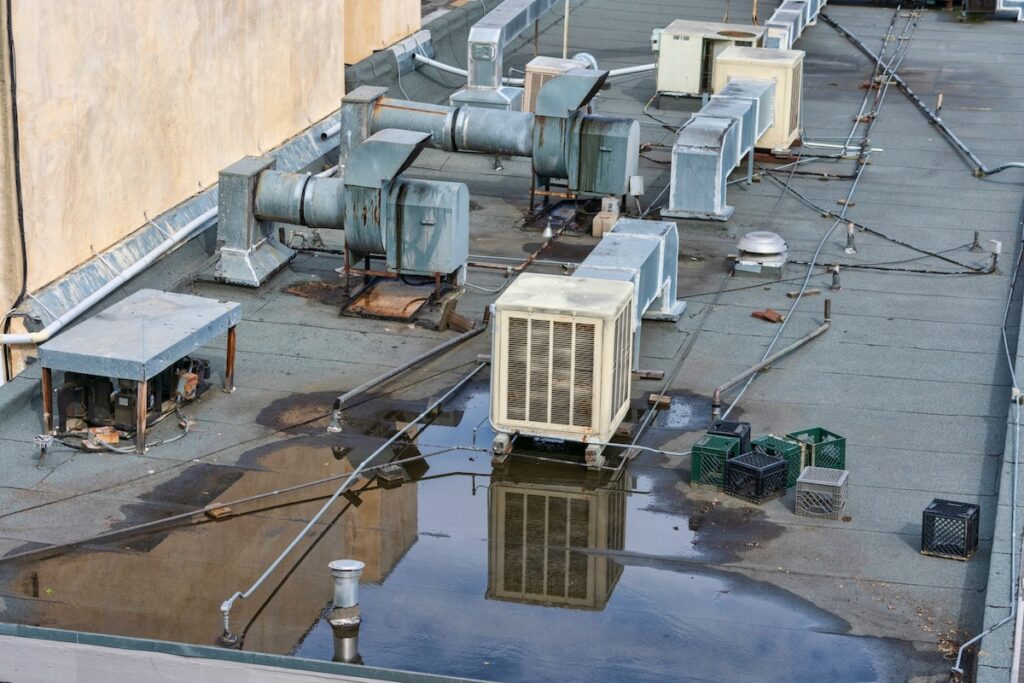
💵 How Much Do Emergency Repairs Cost?
Costs can vary based on the severity of the damage and the materials involved. Here’s a general range:
- Emergency tarp service: $200–$700
- Minor leak repair: $300–$800
- Shingle replacement: $150–$400
- Commercial membrane patch: $500–$1,500
Tip: G. Cannon never upsells or adds hidden fees. We offer transparent pricing and help you understand your options.
⭐️ Prevent Future Roofing Disasters
Emergency repairs are stressful—but future-proofing your roof doesn’t have to be.
Here are smart prevention tips:
- Schedule bi-annual roof inspections, especially after winter and summer storms.
- Clean gutters and downspouts to prevent clogs and ice dams.
- Trim overhanging branches to avoid puncture damage from limbs.
- Replace aging shingles or flashing before they fail.
- Seal roof penetrations like vents and chimneys during routine maintenance.
Tip: Enroll in a preventative maintenance plan with your roofing contractor to stay ahead of problems.
🛠️ Fast Action, Smart Repairs, Real Peace of Mind
Roofing emergencies happen—but with the right response, you can tackle disaster head-on. From fast temporary fixes to thorough inspections and permanent repairs, G. Cannon is here to help when it matters most.
Whether you’re a homeowner dealing with storm damage or a business owner managing a leak over sensitive equipment, we’re ready to jump in.
Contact G. Cannon today for a free estimate for roof repair services. We’ll protect your home or business and get your roof back to full strength—fast.
